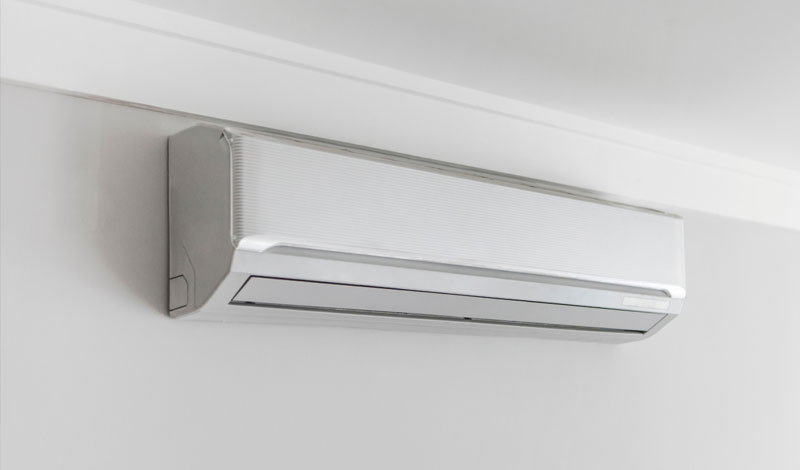Variable refrigerant flow (VRF) cooling systems are popular in many countries, but they are relatively unknown in the United States. Introduced in the 1980s, VRF systems have potential advantages over conventional cooling technology in energy savings and increased individual control. They are best-suited for applications with varying loads and occupancy zones, such as office buildings and lodging facilities. Although it’s not right for every situation, consider VRF technology when you’re upgrading your system or expanding your facility.
What’s so cool about VRF?
Configurations differ among conventional air conditioning systems, but one key element remains the same — there is one condenser for each evaporator. With VRF systems, however, a single outdoor condenser can be tied to as many as 20 indoor evaporators — each individually controllable. Evaporators are typically hung from the wall or ceiling in the area to be cooled.
Ductless multi-split systems also operate with multiple evaporators, but there are no individual controls. Unlike these systems, VRF units constantly change the amount of refrigerant that flows to each evaporator. By operating at varying flow rates, VRF systems can improve occupant comfort and reduce energy use.
VRF systems are available as air conditioning units or as heat pumps that provide heating and cooling. Some models are available with heat recovery capability, providing simultaneous heating and cooling by passing heated refrigerant from cooling evaporators to heating evaporators.
The good and the bad
VRF systems offer a number of advantages over conventional technology:
- Energy efficient: VRF systems eliminate duct losses associated with conventional systems. Also, variable speed capability helps increase part-load efficiency. Energy savings of up to 20% are possible compared to conventional systems.
- Increased control: Multiple zones are possible, with precise temperature control. This increases occupant comfort and satisfaction and can reduce overall energy use.
- Flexible: Because a single outdoor condenser supplies multiple indoor units, the VRF system is easily adaptable to reconfiguration or expansion.
- Low profile: Refrigerant lines take up much less space than air ducts. Installation is easier in older buildings with no central air, or where space is limited.
- Low operating noise: Noise levels for VRF systems are much lower than that of conventional units.
Sounds great, right? Well, VRF systems do have some issues:
- Cost: The total installed costs for VRF systems are estimated to be 5% to 20% higher than for conventional chillers. Cost savings may provide a payback over the life of the system.
- Ventilation: A separate ventilation system, such as a dedicated outdoor air system, is required.
- Maintenance issues: Although maintenance and operation requirements are similar to other unitary equipment, long refrigerant lines increase the potential for leaks, which can be difficult to access and repair.
- Piping limitations: VRF systems have restrictions on the length of horizontal and vertical piping runs between components.
If you are considering an HVAC system upgrade, ask your contractor if VRF systems are right for your facility.
